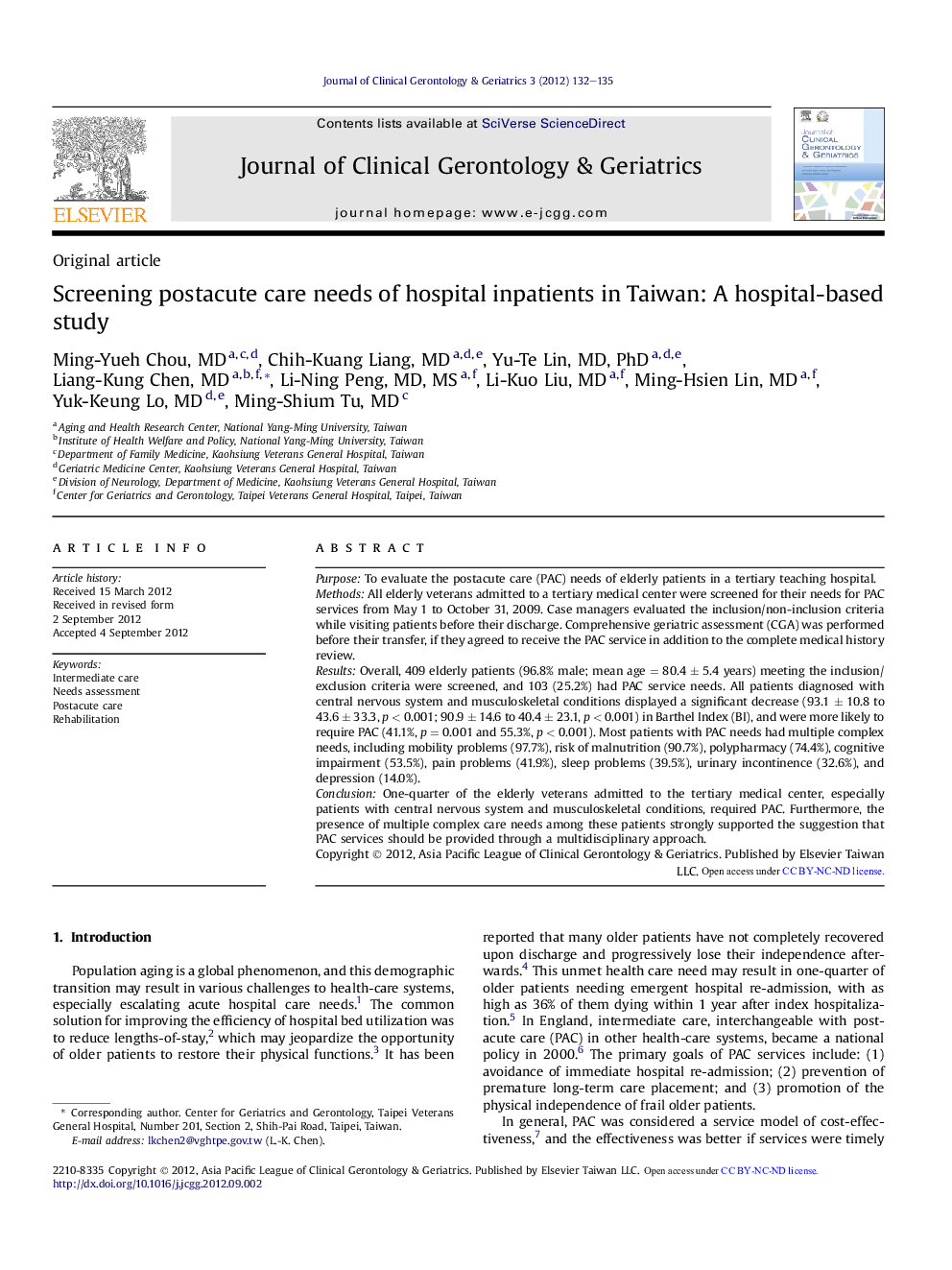| Article ID | Journal | Published Year | Pages | File Type |
|---|---|---|---|---|
| 3325825 | Journal of Clinical Gerontology and Geriatrics | 2012 | 4 Pages |
PurposeTo evaluate the postacute care (PAC) needs of elderly patients in a tertiary teaching hospital.MethodsAll elderly veterans admitted to a tertiary medical center were screened for their needs for PAC services from May 1 to October 31, 2009. Case managers evaluated the inclusion/non-inclusion criteria while visiting patients before their discharge. Comprehensive geriatric assessment (CGA) was performed before their transfer, if they agreed to receive the PAC service in addition to the complete medical history review.ResultsOverall, 409 elderly patients (96.8% male; mean age = 80.4 ± 5.4 years) meeting the inclusion/exclusion criteria were screened, and 103 (25.2%) had PAC service needs. All patients diagnosed with central nervous system and musculoskeletal conditions displayed a significant decrease (93.1 ± 10.8 to 43.6 ± 33.3, p < 0.001; 90.9 ± 14.6 to 40.4 ± 23.1, p < 0.001) in Barthel Index (BI), and were more likely to require PAC (41.1%, p = 0.001 and 55.3%, p < 0.001). Most patients with PAC needs had multiple complex needs, including mobility problems (97.7%), risk of malnutrition (90.7%), polypharmacy (74.4%), cognitive impairment (53.5%), pain problems (41.9%), sleep problems (39.5%), urinary incontinence (32.6%), and depression (14.0%).ConclusionOne-quarter of the elderly veterans admitted to the tertiary medical center, especially patients with central nervous system and musculoskeletal conditions, required PAC. Furthermore, the presence of multiple complex care needs among these patients strongly supported the suggestion that PAC services should be provided through a multidisciplinary approach.
